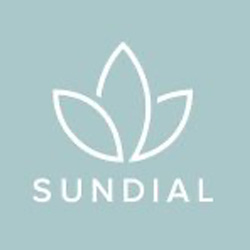Seven months ago, I mentioned that we could create a bond ladder using diversified bond ETFs that mature at a specific year for some of our financial goals.
Read: Four Innovative U.S. ETFs That Can Improve Your Investment Portfolios
As the market interest rate changes over time, a bond ladder allows us not to miss out on a higher interest or lose out on a lower interest. Imagine that you wish to accumulate for 20 years and wish for a part of your portfolio to be less volatile.
You could sink all of your $200,000 in 2020 when the yield-to-maturity that you can get is 0.80%. Fast forward to today, the yield-to-maturity on similar-quality bonds is yielding 4%. The bonds you buy is under-water but not just that you may be stuck for 7 years before you can reinvest.
The alternative is to create a ten-year bond ladder with iShare’s iBond. A tenth of the $200,000 portfolio matures in a years time and you can reinvest the capital into a ten-year iBond at the current yield-to-maturity, which is much higher.
Of course, the opposite can happen as interest rates are extremely high and if we shift to a period of very low-interest rates.
Recently, I realized that IShares has listed some iBonds over in Europe as well. Not as much as in the United States Exchange currently but we always need a first step for them to see how the demand is.
So let us talk through this today.
IBonds is a Diversified Bond ETF That Matures at a Specific Period.
I am not sure if other ETF providers are doing it but currently, I can only find iShares being more prominent about it.
Currently, we are able to buy bond unit trusts or ETFs through unit trust distributors or ETFs listed on various exchanges. These bond unit trusts or ETFs can be passively managed or actively managed.
If you have a near-term financial goal such as your child’s tertiary education cost coming due in 5 years time, the actively-managed bond funds may be more of a problem. This is because the bond manager of the fund may have a different objective to your wealth objective, would make calls to hold or sell bonds that might cause surprisingly good or bad performance.
The key is that their objective for the fund is to operate on an ongoing basis but your financial time horizon is limited.
The passively managed bond funds are better in that you can rely on the effective duration to judge the time it takes to break even on the bond fund. In our example, if my time horizon for this financial goal is 5 years, I can only invest in a bond fund whose effective duration is less than that so that I at least break even when I need it.
But what if I want more certainty that by 5 years:
- I can have my principal back.
- Earn the coupons.
The difference here is that you not just want the principal back but to earn the coupon.
This is why people may choose to buy $250,000 minimum direct bonds so that they can have their principal back and earn the coupons for more certainty.
But the problem with direct bonds is:
- The minimum invested amount is high.
- If that one bond defaults, you may lose the principal.
Here is where a bond fund with a fixed maturity date comes in:
- They are a portfolio of bonds that mature at a specific period. When the bonds mature, the prices go back to par, and you get your principal back.
- Because they are diversified, you don’t run into the risk that if your sole bond issuer defaults, you lose a large chunk or all your principal. There is still a risk and you can go into the history to see the default rate of government or corporate bonds to assess that risk.
- You are able to earn the bond coupons paid out during the tenor.
The main benefit of iBonds is that the minimum capital is not $250,000 anymore and you diversify away the single or small-group issuer risk.
The IBOND tracks the Bloomberg MSCI December XXXX Maturity USD Corporate ESG Screened Index. This was lifted from the 2025 prospectus:

Currently Only 4 Maturities of iBond Listed
You can review the available iBonds on iShares Website here.
You might need to click on Filter > Strategy and set it to IBONDS.
There are both EUR and USD-denominated bond funds, and both distributing or accumulating bond funds.
Here are the USD-denominated Accumulating bond funds:

The maturity dates are from 2025 to 2028.
We can form a short bond ladder with it. A shorter bond ladder will be more sensitive to interest rates because the longest tenure is about 4-5 years away.
But I think for some folks this may be good enough especially if you don’t have a fixed goal for your money. These are the typically more risk-averse people.
The weighted average yield to maturity for all four is pretty high at nearly 6% but if we had this some years ago, it might be closer to 1%. So this may give you an idea that this nice return may be here for a short period and it always changes.
The total expense ratio (TER) is pretty cheap at 0.12% and is diversified across more than 350 bonds.
The only issues now are corporate bonds. There are no bond funds with government, or high-yield bonds currently.
You can take a look at the allocation in each of the bond funds. I have downloaded the spreadsheet for the 2028 bond and show you here:

The bonds are not weighted equally but you can imagine that if those top ten bonds default, it will lose you 1% of your principal. But you gain back more in terms of the coupon over the years.
The portfolio is made up of bonds of various maturities but all coming due close to the same time in 2028.
The effective duration allows you to see which bonds are more tailored to the tenor of your financial goal.
If you opt for the accumulating share class, the coupons will be reinvested back.
If you opt for the distributing share class, the distribution will take place in March, June, September and December.
As Singaporeans, we do face the risk of the USD weakening and eating into returns. But this is not something that some investors are unfamiliar with because some do invest in USD-denominated direct bonds.
It would be better if we have iBonds denominated in SGD but we cannot have everything so perfect in this world.
Why should we consider the UCITS Version of the IBONDs over the US-incorporated IBONDS?
We know that non-US resident investors do not need to pay withholding tax on interest or distributions from Treasury bills/notes/bonds but for corporate interest and distributions, this might be different.
To find out the degree of withholding tax of the bond ETFs incorporated in the US, we can go to this iShares Tax Document page and find this document (Qualified interest income percentages for the iShares Funds):

iShare states:
Certain iShares and BlackRock Funds generate qualified interest income and short-term capital gains that may be exempt from United States withholding tax when distributed to non-U.S. holders. The U.S. tax law permits a regular investment company (“RIC”) to designate the portion of distributions paid that represent interest-related dividends (commonly referred to as qualified interest income) and short-term capital gain dividends as exempt from U.S. withholding tax when paid to non-U.S. shareholders with proper documentation.
So the document lists the degree of withholding tax exemption and I zoomed into the U.S-incorporated IBONDS:

We can observe distinctly the degree of exemption between Treasury, Muni bond and corporate bond. The saving grace is that there is a degree of exemption for corporate bonds as well.
Ireland, where the UCITS IBONDs are domiciled, has a dual-taxation treaty with the U.S. and so the distributions for the UCITS IBONDS may be lower:

Depending on whether this is treated as interest or dividends, instead of a 30% withholding tax, buying the UCITS IBONDs may cut that away. I would probably have to buy a distributing class of this IBONDS to test it out and report back.
Financial Planning with IBONDs
The IBONDs are most suitable for the more risk-averse investors and also investors who have short-term goals that are five years or less.
You gain:
- Diversification from default due to concentration.
- Capturing the return exactly when you need it.
- More certainty in the range of outcomes for your financial goals
You lose out on:
- More uncertainty due to US-SGD currency movement.
Suppose I have a child who is going to university in 5 years’ time. The tuition fee cost today is $9,500 a year and a 4-year course will be $9500 x 4 = $38,000.
Assuming inflation is 4% a year, the financial goal is $46,200 in five years time.
Given the current yield-to-maturity is 6% for the 2028 IBOND, I can conservatively assume a 5.5% return and figure out the capital I need to commit to a 2028 series of IBOND today. That will work out to be $35,375.
Honestly, that is not too different from $38,000. For many shorter-term financial goals, the returns really matter less. But in this case, the bond ETF hedges your inflation risk.
But if you wish for your money to work harder but within your ability to take risks, then IBONDs can be pretty nifty.
How You Can Buy ISHARES UCITS IBONDS ETF
The IBONDS ETF are listed on the London Stock Exchange (LSE). I have provided the ticker for you to search them up.
You can buy them using a broker that allows you to trade on the LSE.
Interactive Brokers, which is my broker and much talked about broker here at Investment Moats, is a trusted one you can use.
Because you can buy 1 share over in LSE, even if you have US$2,500, you can buy a diversified investment-grade quality bond fund that matures at a particular period.
Suppose we wish to buy the 2028 iBONDS which trades at $98.03. You can just buy 2500/98.03 = 25.5 or 25 shares (round down). Your commission would likely be $1.41 / $2450 = 0.057%.
Whether you are using a tiered or fixed commission structure (Interactive Broker has both), usually the commission is kept to 0.055% unless your trade size is much smaller.
Interactive Brokers charges a flat US$2 for currency conversion at near-spot rates.
The post 6% Yielding UCITS iShares iBond ETFs with Fixed Maturities Available to Singaporean Investors Now appeared first on Investment Moats.





